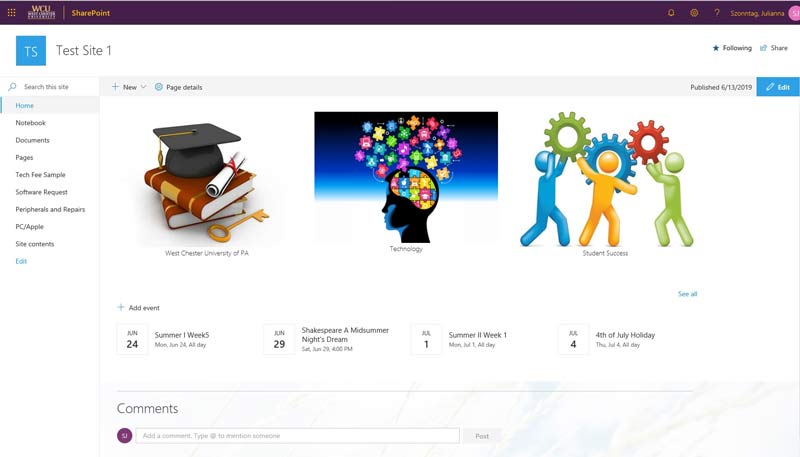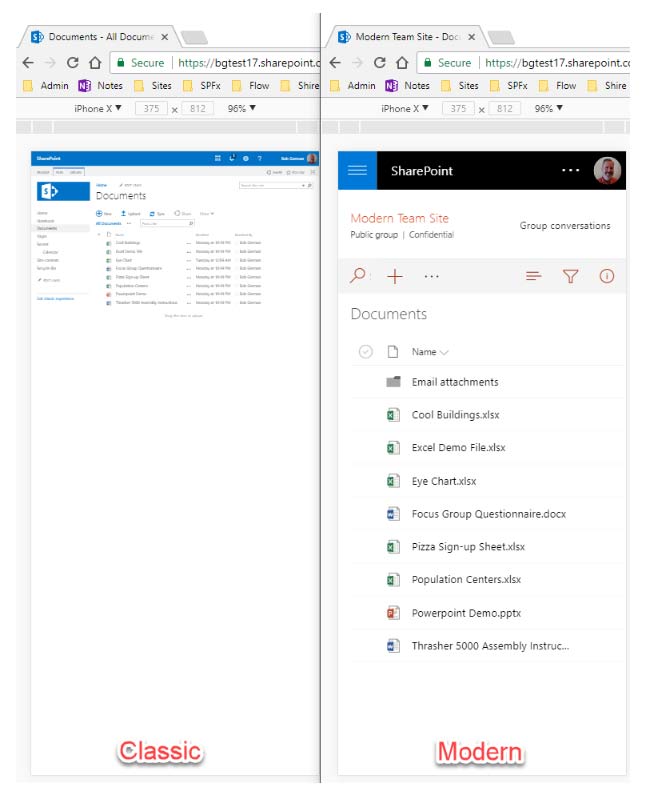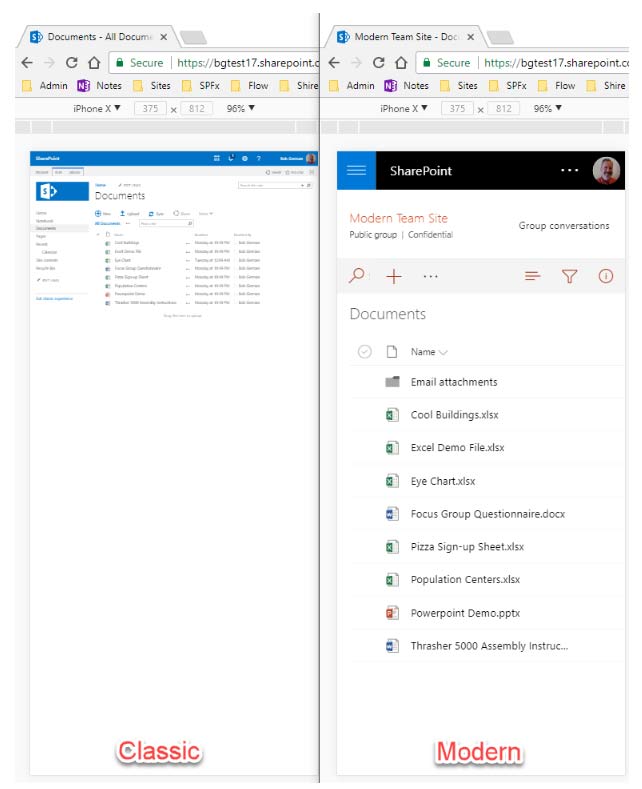Sharepoint Online
SharePoint Online, a component of Office 365, is a cloud based collaborative platform that integrates with Microsoft Office. SharePoint Online allows an enterprise to store, retrieve, search, archive, track, manage and report on digitized documents. First launched in 2001, SharePoint started as a shared document management and indexing application that grew to become an early portal solution.
WCU implemented SharePoint in 2008 as the university’s secure intranet. Mainly used for file sharing, SharePoint has grown into a robust system where users can manage content, use knowledge and applications to empower teamwork, quickly find information and seamlessly collaborate across the university.
Moving SharePoint from an on-premises setup to the cloud allows us to access the most up to date technology for collaboration as it evolves and changes on a regular basis when new features are implemented. The benefits of being in the cloud:
- No infrastructure investment is needed
- No need to dedicate an IT team to maintain the infrastructure
- Integrated with Office 365
- Updates are automatically applied by Microsoft
- Backup and Disaster Recovery provided by Microsoft

SharePoint Online introduces the Modern Experience
Modern SharePoint is a whole new user experience. It is designed to work on mobile devices and addresses usability issues. The site automatically adapts to a narrow screen on a tablet or a phone, keeping the page readable without sideways scrolling on any screen size. No customization or advanced configuration is needed to create attractive sites.

In addition, lists and libraries have a new look with advanced filtering and bulk editing. SharePoint online is easier to use, and easier to navigate because of its clean look and feel.
PowerApps and Microsoft Flow
A large part of the collaboration tools included in SharePoint are InfoPath forms.
InfoPath forms are used to distribute, file, and submit electronic forms containing
structured data. Workflows which are pre-programmed mini-applications that  streamline and automate a wide variety of business processes can be attached to InfoPath
forms. These workflows can save users time and effort and bring consistency and efficiency
to tasks that are performed on a regular basis. The information from an InfoPath form
is stored in a SharePoint list. From this list users can view the data and export
it to an Excel file to create reports.
streamline and automate a wide variety of business processes can be attached to InfoPath
forms. These workflows can save users time and effort and bring consistency and efficiency
to tasks that are performed on a regular basis. The information from an InfoPath form
is stored in a SharePoint list. From this list users can view the data and export
it to an Excel file to create reports.
With Microsoft’s announcement that InfoPath forms will not be developed any further, and with support ending in 2026, the product PowerApps has been named the successor.
PowerApps is a no code enterprise service that users can use to create forms from a SharePoint list. As with SharePoint’s modern look, the app is designed to fit the screen of any device. The workflows previously set up with InfoPath will be recreated with Microsoft Flow, a cloud-based software that has almost identical functions and can be used to create and automate workflows and tasks such as an approval process.
The move to SharePoint online provides us with a larger storage solution, an updated look and feel, consistent maintenance and updates, and more seamless user interfaces.
Visit the new Sharepoint Online site.
